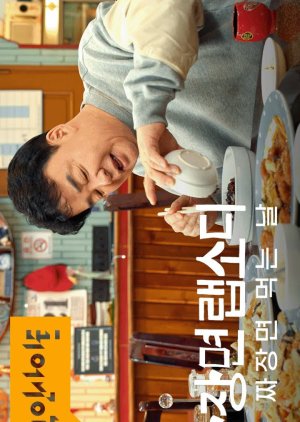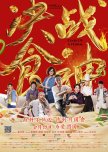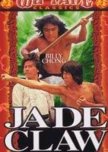Trace Jjajangmyeon's flavorful evolution from its Chinese origins to its status as one of South Korea's most beloved comfort foods. (Source: TMDb) Edit Translation
- English
- Español
- Português (Brasil)
- 한국어
- Native Title: 짜장면 랩소디
- Also Known As:
- Genres: Food, Documentary
Where to Watch Jjajangmyeon Rhapsody
Subscription (sub)
Reviews

Grab a snack because this show will make you hungry!
Chinese Korean Food might have been a more accurate title than Jjajangmyeon Rhapsody. The two-episode food show with Baek Jong Won not only talked about the spicy black bean noodle dish but also other foods brought over with Chinese immigrants and adapted to Korean tastes.The first episode focused on Jjajangmyeon-how it evolved and became one of the most popular dishes in Korea. A celebratory dish at first, it’s now delivered to pool halls, offices, farm fields, and even boats. Six million bowls of the gooey black delight are sold in Korea every day. If the noodles were lined up end to end they would circle the globe 1 ½ times daily. Originally, a cheap food Chinese laborers cooked it slowly turned into the dish it is today. Chinese “places” as they were called in the 1960’s after a law was passed preventing the Chinese from buying real estate and businesses were quite popular and about the only foreign food available. When the economy accelerated in the 1980’s, Chinese restaurants took advantage of delivery service to expand their clientele.
Baek and other guests showed tips on how to enhance the eating experience. The main rule was to not be embarrassed about your face getting messy from the dark sauce. Different varieties and techniques were explored as well as how to spot an authentic Chinese restaurant. Brief historical moments that influenced where the Chinese settled were also thrown in.
Episode 2 covered Jjamppong. Apparently, one of the great dilemmas in a Chinese restaurant is whether to order Jjajangmyeon or Jjamppong. The evolution of Jjamppong from a mild dish to the torridly hot, “adult” dish was explored. Jjajangmyeon has relatively fewer variations whereas Jjamppong has endless varieties. Foodies take Jjamppong food tours, and new takes on the popular dish and hangover cure are created all the time. Two men have tried 500 Jjamppong places in eight years!
Episode 2 also covered Yaki Udon, Mandu (Korean dumplings), Tangsuyuk (Sweet and sour) and fried rice. Some Chinese immigrants came voluntary, others were voluntold by the Japanese when they occupied the peninsula and needed more laborers at the ports to load up the Korean rice on ships bound for Japan and its army. After the Korean war, Americans shipped large amounts of wheat to Korea which they put to good use in making tasty noodles.
I wish they’d given more credit to the hard-working Chinese immigrants who faced discrimination personally and legally and found a way to succeed. Just as they did in the United States, the Chinese often began restaurants and adapted their food for their new home. The documentary made it seem as if the Koreans’ tastes caused the dishes to be delicious instead of the originators of the food working to make them more palatable for their customers.
I enjoyed watching how different chefs created variations of Jjajangmyeon and Jjamppong, pouring their love and creativity into the popular noodle meals. Jjajangmyeon is a dish that brings happiness as well as satiation and that joy was infectious. If you enjoy food shows, this is one to give a try. Just don’t forget to have a snack nearby.
18 February 2024
Was this review helpful to you?
Recommendations
There have been no recommendations submitted. Be the first and add one.



































